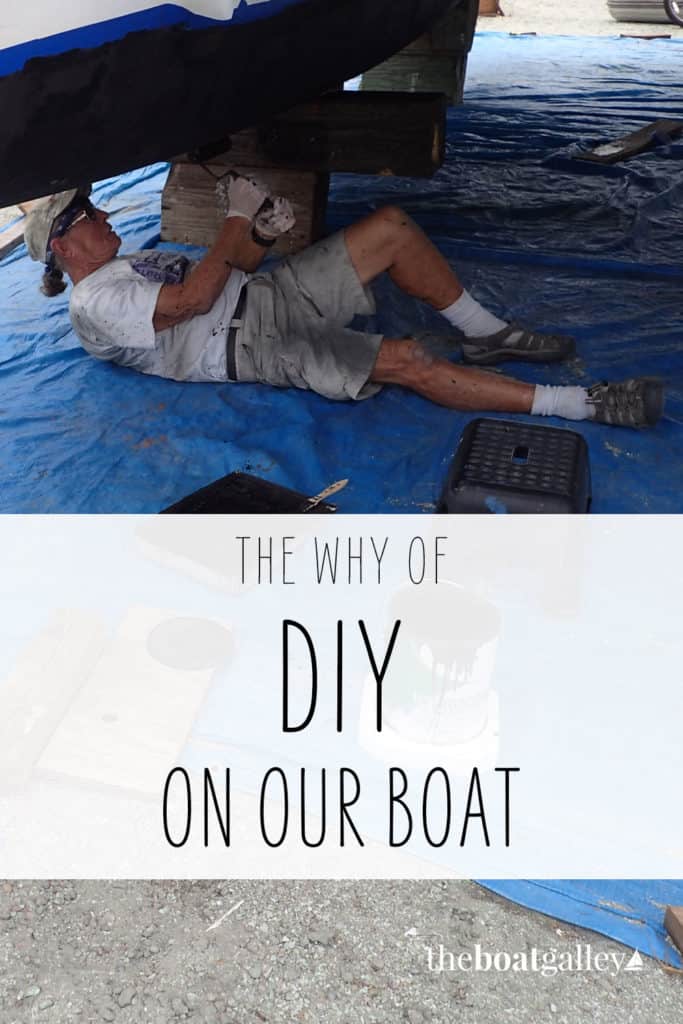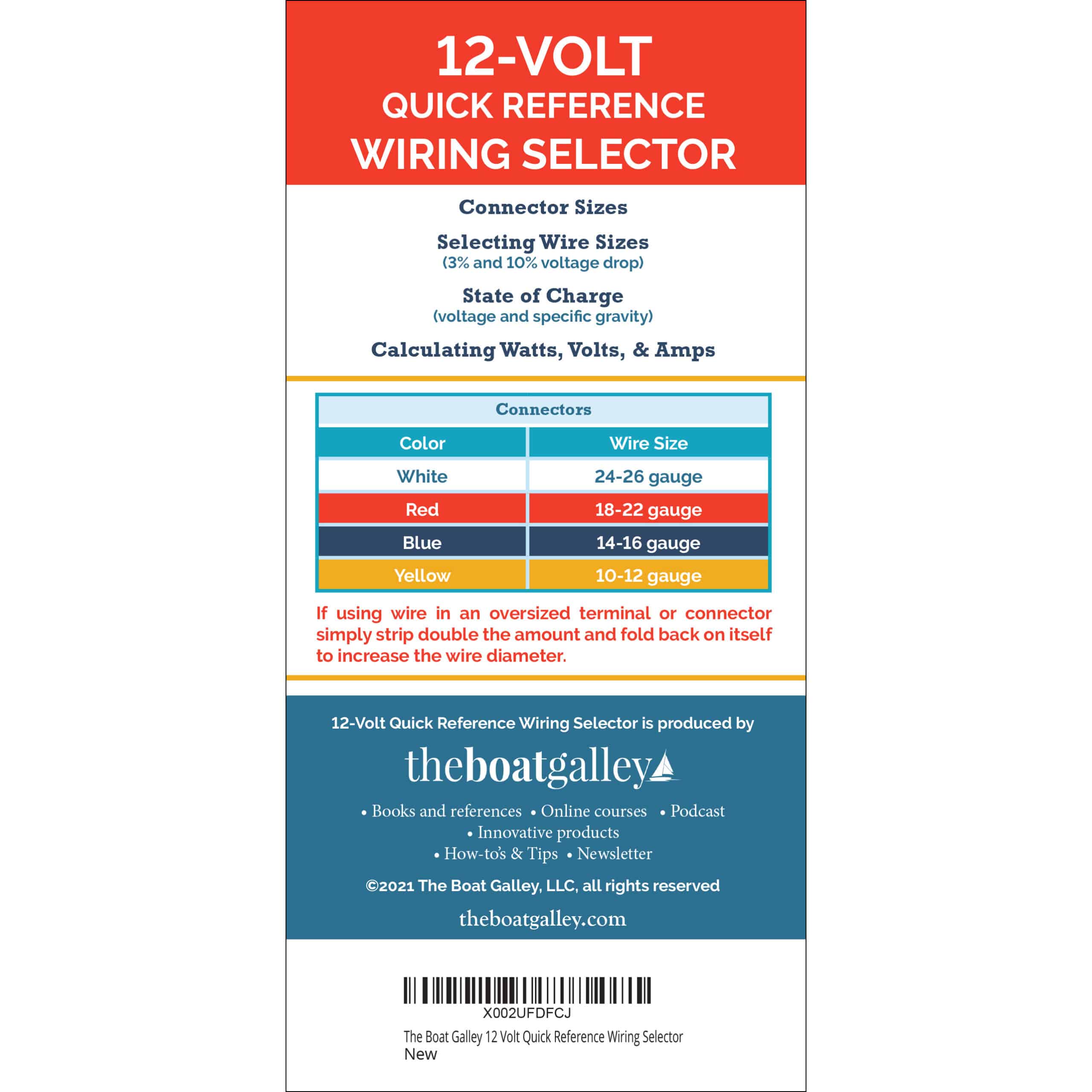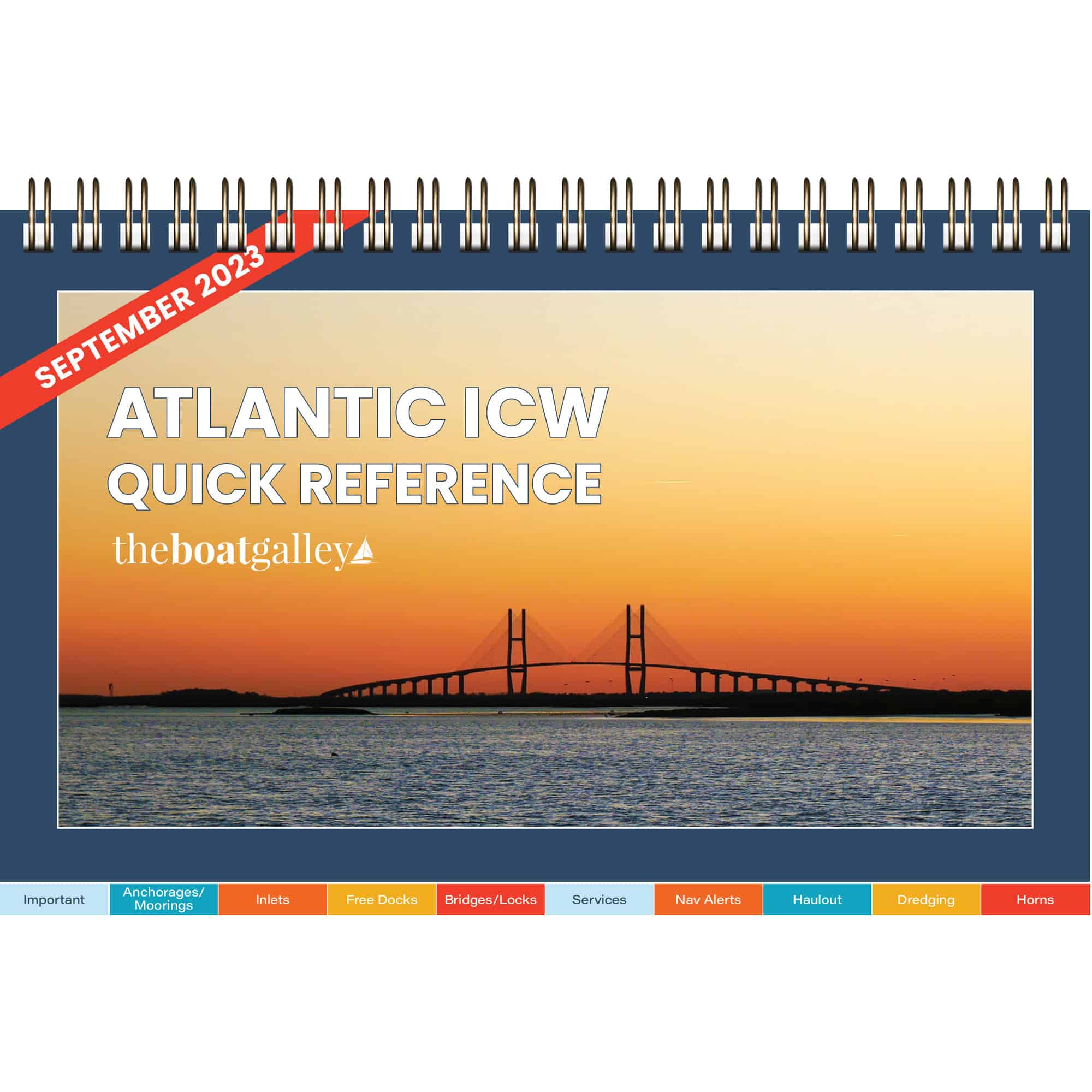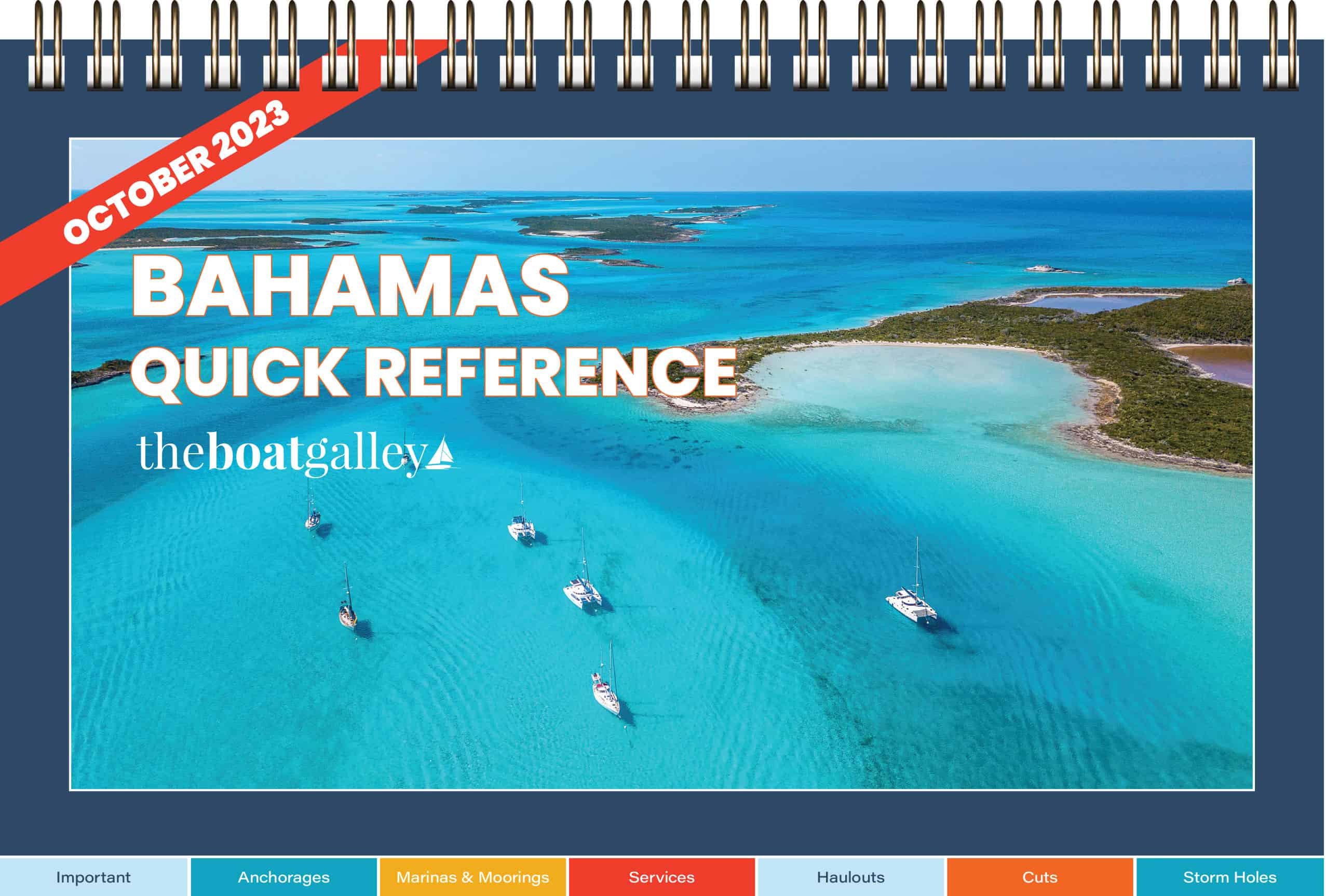So why do we DIY on the boat?

More than one reader has commented on the fact that we do a lot of our own work on our boat. And – in more polite terms, of course – we get asked a couple of questions quite frequently:
- Are you just cheap?
- Do you just like to work on your boat? As opposed to say, going somewhere on it?
While there may be some element of cost-consciousness in doing our own work, that’s really not it.
Self-Sufficiency
We do get a certain satisfaction in being self-sufficient, but we’d much rather spend our time exploring new places, sailing and socializing. But when something breaks or we decide needs to be changed/upgraded, the work has to be done somewhere by someone. Professionals might be faster; often they’re not due to full schedules. By doing it ourselves, we can — to some extent — determine the timing and location.
I’ll start by saying that Dave and I are both reasonably mechanical but we were never big on home improvement ashore. Neither of us came to cruising with any special set of skills or background that would be particularly helpful in boat work. So it’s not like any of this is stuff we’ve been doing all our lives.
When we bought our first cruising boat we hired out most of what we needed done. And we had mixed results – some was very good and some not so good. Sometimes something wouldn’t really be fixed and sometimes it was made worse.
When We Work on the Boat, We Care
When we pay a professional to do a job, we think that it’s going to be done right. Better than we could do it. Faster. And sometimes, yes, that’s true. But many times it’s not. Even though a particular job may have been something we knew nothing about when we started, we were virtually always successful.
I think a large part of that was because we cared. We weren’t just picking up a paycheck for our work, we were going to have to live with how the job was done. So we’d research. Watch YouTube. Do something and re-do it if the results weren’t satisfactory. We were far more tenacious.
A case in point, which was actually a turning point in our DIY or not mindset: in 2005, our refrigerator just wasn’t cooling sufficiently. Two repairmen couldn’t find the problem; we finally figured out that it was low voltage from dying batteries on our own.
It was an A-HA moment. We didn’t have to be experts. We had owner’s manuals, books from Nigel Calder and Don Casey, the internet and other cruisers. With their help, we could figure stuff out. Little by little, we began doing more and more of our own work.
The more of our own work that we did, the fewer problems overall that we had. We had a better understanding of the routine maintenance needed and spotted potential problems before they became something big. When problems did arise, we knew what we’d done before and where the likely trouble spots were.
If we discovered a problem while doing one job, we’d go ahead and fix the other thing as well. Most professionals aren’t going to do that: they do the job they were hired for, and that’s it. Yeah, it’s that old project creep and one of the reasons it takes longer to do something yourself. You know, things like when you run a wire for your new fan and find another wire that’s not crimped but just twisted and taped, so you take the time to take it apart and crimp it properly.
We Choose the Parts
Removing old parts and having to decide exactly what new parts to buy has paid off for us, too, versus letting someone else spec out a job. So many times, it’s when we get in there to remove the old whatever that we discover why it failed or wasn’t satisfactory – or another problem with it. And then when we choose the new, we can read product descriptions and reviews to try to find something that will work better – or an improved installation method. (Admittedly, sometimes we still choose a dud.) Ordering parts ourselves, too, we get to choose the quality. And we aren’t limited to an in-house supplier.
This past weekend, we removed our lifelines and were planning to send them out to be redone (numerous rigging shops offer a service where you can send them your old ones and they’ll duplicate them). A friend convinced us to do them ourselves, saying we could borrow his swaging tool.
Although Dave and I had looked at what we had when we removed the lifelines, it wasn’t until I started measuring what we had in order to figure out what I needed to order that I discovered that we had four close but different size fittings – 6mm, 1/4”, 8mm and 5/16”. And only three different sizes on the threaded studs. So some had been jammed and cross-threaded together. Other connections didn’t have any locking mechanism and I discovered one lifeline with no adjusting turnbuckle. Had I not been buying parts, we wouldn’t have known — and the shop probably wouldn’t have noticed the difference since we would only have sent in the ends with the threaded studs.
I had to buy additional parts, but the problems will be corrected: we’ll have one size of connector, none will be jammed on, the cross-threaded ones are headed for recycling, all that are threaded will lock and we’ll be able to adjust the length of all. We also decided to use different hardware in one area to avoid a chafe problem. And I chose to use 316 stainless instead of the “standard” 304 that the rigging shop uses.
We Don’t Do Everything
Admittedly, we don’t do everything ourselves. AC power is one that we do very little with – a mistake could kill us instantly. Other times, we go a semi-DIY route: we’ll hire a “consultant” or someone to work with us. That was the case with our solar panel installation – Alex helped us figure out what we needed and we did 90% of the work on our own. We learned about our system, it cost less and we got it done sooner than if we’d needed to wait for a larger slot in Alex’s schedule (he was at our boat a couple times for an hour each time and had a little shop time vs. the two days he’d have needed if he did everything).
We Can Do More On the Boat than We Thought
The longer we cruise, the more we do ourselves. We’ve come to realize that most of what needs to be done isn’t really that difficult when you break it down. We’re not trying to come up with new ways of doing things. The how-to and troubleshooting guides are all out there. Google is the cruiser’s best friend.
The more we try (and succeed at), the more we’re willing to try. Dave and I find that often it’s the idea of doing something that’s scary when you’ve never done it before. Who? Me? Fill in a thru hull? But actually doing the work isn’t nearly as mind-boggling as we anticipated. Yes, it may be tiring and yes, we may spend some time at various points staring at parts and re-reading the book and then watching YouTube for the seventh time, but suddenly things will click and we’ll get it done. We’ve learned to allow plenty of time for new things and take it step by step. Hey, that thru hull is patched!
NOTE: I don’t want to imply that we’re against hiring professionals. Good ones are wonderful to work with and we seek them out whenever we can. But we also try to learn how to do things on our own. We’ve found that the truly top-notch pros aren’t afraid to teach as they go.
Read Next

Carolyn Shearlock has lived aboard full-time for 17 years, splitting her time between a Tayana 37 monohull and a Gemini 105 catamaran. She’s cruised over 14,000 miles, from Pacific Mexico and Central America to Florida and the Bahamas, gaining firsthand experience with the joys and challenges of life on the water.
Through The Boat Galley, Carolyn has helped thousands of people explore, prepare for, and enjoy life afloat. She shares her expertise as an instructor at Cruisers University, in leading boating publications, and through her bestselling book, The Boat Galley Cookbook. She is passionate about helping others embark on their liveaboard journey—making life on the water simpler, safer, and more enjoyable.
Your VHF can do so much! Learn how to use ALL its features for just $39:












Frances Liz Fernandez says
Makes sense to me. Sometimes we hire a professional because we simply don’t have time to invest
Rodney Lewis says
I DIY because the marina gets $90 an hour, and I can do a better job anyway, lol!
Jonathan says
Yes, yes and yes. Any boat owner who does not do a significant portion of DIY better have deep pockets and be willing to spend a lot of time in marinas waiting around for mechanics, and have a very restricted cruising ground.
A couple of other things:
1. Many times a failed item is a simple fix. Learning basic trouble shooting, by trial and error if necessary, will save you time and money in the long run.
2. When you pay someone else, the meter runs from the time they saunter out of the shop with some tools, come stare at your unique installation for some time, go back to the shop for another tool, do the repair, clean up, go back to the shop, etc. Very little of the total time is actually applying their expertise or tool to the problem. To the extent you can do some basic take apart, take the failed item to the parts desk, discuss the alternatives, do some clean up and put back together, you will focus the mechanic’s time on real value added activity. I was once charged three hours labor for the boatyard to drive around looking for the right starter solenoid!
3. If you get into the habit of DIY, you will be a lot more comfortable heading off to Timbuktu where there isn’t a marine mechanic handy. Say for example, much of the Bahamas.
4. If you develop DIY skills you will be able to “pay it forward” when another boater is in a jam. Sometimes two DIY brains tossing the problem back and forth makes the light bulb go off.
Mike B. says
My wife and I recently replaced through hulls on our boat ourselves. Two of them, for the aftermarket air conditioners, I assume were originally installed by “professionals”. When originally installed, they drilled the hole applied sealant, and slapped them in place. We have balsa core below the waterline. They didn’t seal the core to prevent water and they didn’t even remove the old bottom paint before installing them. Needless to say they leaked into the core. Fortunately for us, we caught the situation early and didn’t have a major delamination issue. It is now dry, sealed with epoxy, and I feel much better about them.
Do it yourself may save money, may sacrifice time, but in the end (assuming you do the needed research on what you are trying to do) you know it will be done right. To me that is the biggest win. Now…I’d better get back to building my hard bimini for our boat (we coudn’t even find a “professional” willing to do this one…that would actually show up for the job anyway).
So keep on DIY-ing…it is the best way to go for all sorts of reasons. 🙂
-Mike
ThisRatSailed
Gimme Shelter says
Amen to all of this. We have terrible experience with getting things hired out. Especially for the odd once-in-awhile jobs.
Andrew H says
Wonderfully well put, as always. I was one of the people saying I understand why you should hire out when I heard how much work it was to fill in the thru-hull. Now I get why you want to do it. Maybe the best answer is buy a boat that never ever needs bad jobs done to it. If you find one (with a unicorn horn on it of course) please let me know!
Florian says
Very well said ! We are custodians and sailors of a 1923 timber gaff ketch up in the north of Australia (Townsville region). Not only do we not get any of the parts that we may need in town, but also there are very little, if any marine tradies who know what they are doing & have experience in wooden boats (“This is what my father had when he was young and plastic was not invented” etc.). And, if you find someone who pretends to be able to do the job you afterwards wish you had done it yourself anyway. So sheer necessity is one driver for us to do most of the work ourselves. It’s slow, but at the same time we can be thorough and the result is pleasing (and if not we know whom to blame…).
The more powerful rationale to DIY as much work on our ship as possible is that ‘ancient’ trades have pretty much died out and very few folks know what to do around, at least in this country. A “wooden boat scene” doesn’t exist in the north, so whatever needs to be done sends us on a very satisfying learning curve – we know our boat better afterwards, and it looks as we want it to be. My wife tells me I am a bit anal about timber work and slow when it comes to this, but consents the results are excellent (“OK” is the maximum she utters ;-).
So to summarise, but doing the work yourself you get the result and look that you desire, it doesn’t cost you an arm and a leg, and you learn something about your boat.
One caveat: we stay away from 240 Volts and LPG installations in so far as we go along the “consultant route”, so get initial advice, do the work, and get the ‘tick of approval’ afterwards, which is relevant for insurance purposes. But there’s fewer and fewer LPG and electrical items on board, as we refit the boat authentically, ie kerosene lights and wood oven / stove.
Cheers, Florian
Cheryl says
DIY gives you more confidence in your boat.
SV Nelson says
Excellent article once again. I totally have to agree with you. Working with a helpful professional that cares almost as much as you do is an absolute pleasure and you can learn a ton from them. On the other hand working with a “professional” that is not helpful and is simply there to collect his pay check drains your energy and just isn’t pleasant. Then there is the waste of time of having to fix what he has left you with. Thank you for your constant efforts to keep us informed. Ciao
Cheryl Bular says
Very well said. Been there and learned that lesson. Just DO IT YOURSELF
Jim Allen says
Looks
Like The worst weather will miss you
The Boat Galley says
Prepare for the worst, hope for the best. The system is over 1,000 miles wide so it’s really hard to say what will happen and when.
John Hodgson says
The Boat Galley which system is being discussed L99?
The Boat Galley says
John Hodgson Invest 99L — currently in the SE Bahamas
Terri Zorn says
My husband is very handy,and I’m thankful for his skills.
Victor Raymond says
I like to do the work and installations myself because I can useually afford the time to think things through. I installed a hydronic system on our boat as well as a diesel stove. There is no way I could have hired someone to spend countless hours routing all the plumbing carefully so it is never seen ND does the maximum heating the boat.
On the other hand I did have help installing my solar panels and replacing bad wiring. Everything irks but if I had done it by myself the wiring would have be neater and more inconspicuous.
We are now getting some stainless steel countertops done and that is hired out since I have the equipment nor skills to weld.
I also like to buy the tools to complete a job rather than hiring a pro with those tools so if another job or the same job pops up again I have what it takes to complete it.
Leo Reise says
Wonderful article. DYI advantage – knowing your boat.
Know that there are very few things on a boat that cannot be fixed.
Last know when to call a pro. They have the tools and the knowledge.
Thanks for sharing your thoughts.
Diana K Weigel says
We live in an area with a shortened sailing season for now with almost 1/2 the year on the hard. Sometimes our DYI efforts have resulted in the loss of months of sailing time. Sometimes we choose to have the professionals just do the work so we can just get out there. We actually prefer to do the work ourselves as the goal is to become self sufficient enough to feel free to sail further from shore. I do so agree with you about having control of the parts used.
Karla Chancellor says
This February we had a new Beta Marine engine installed. The boat was in the yard for two months and the work was substandard.
The manager’s excuse was that they had too many jobs to do.
My husband had to get Beta Marine distributor involved to get the shoddy work fixed.
Our boat was back in the water, ready to be released to us and the bill sent when my we found these obvious problems.
Karla
Paul Mac Menamin says
Couldn’t agree more. My response to someone who asks why I spend so much time figuring out how and then fixing whatever problem is that if something goes wrong while I am 20 miles out in the ocean, I can’t call the professional to come fix it again.
1981 Morgn OI has lots of thing to go wrong and needs a lot of maintenance catch up since we bought her.